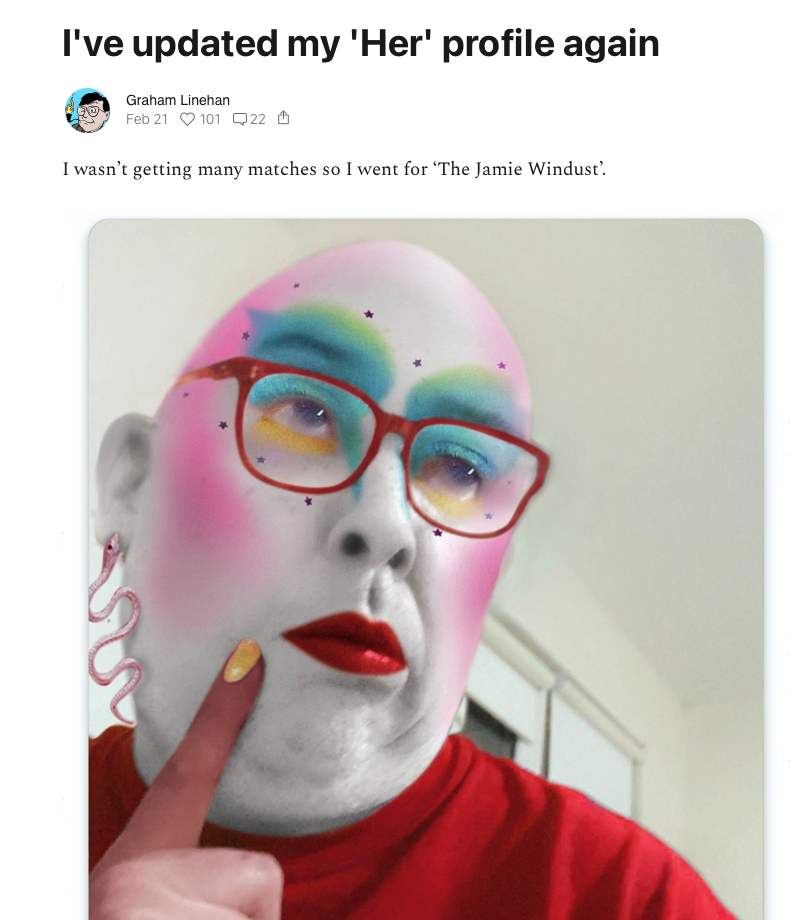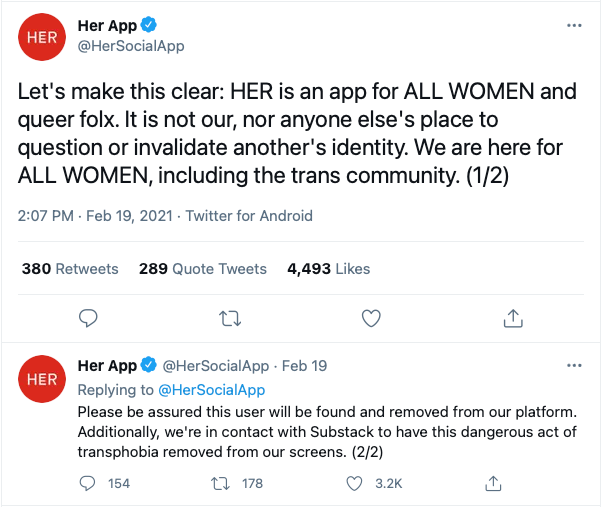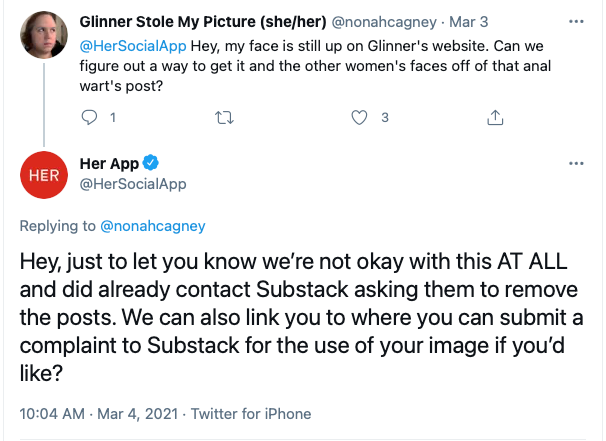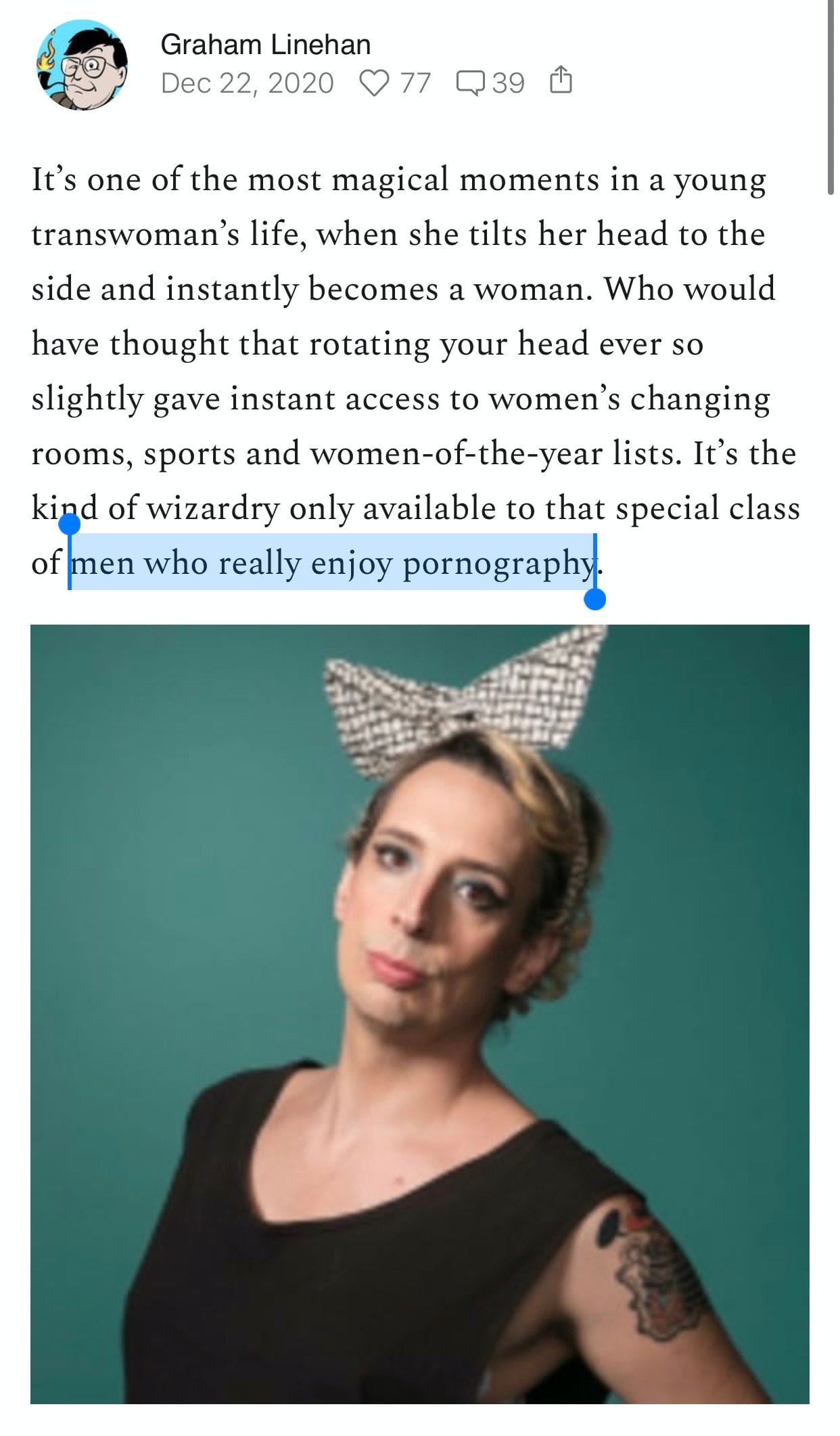The Freedom of Hate
Why I'm leaving Substack on Trans Day of Visibility.
The waiter pauses in front of me. I have just given him my order, and up until this point he has been calling me “sir.” But I’ve opened my mouth—now he’s visibly confused, and I hold my breath.
I’m a small man, glasses with slight black frames in a patterned short-sleeved button-down. I’m visibly East Asian. I’m passing through an airport in the South and have decided to get some food before my flight. The waiter’s pause was expected and feared—he’s expected another voice, but I’ve only been able to give him mine: higher-pitched than he expected, one more aligned with a woman’s.
The memory, thankfully, gets fuzzy from here. What happened next wasn’t violent. The waiter moved on. I was safe from there.
This past weekend, my siblings took turns telling me about the moment they realized I was passing: when an older uncle in Chinatown called me 小伙子; when the host to seat us looked up and said, “What can I do for you two gentlemen?” I’m not sure if these moments came before or around the time of the airport pause—that is, I don’t know if I had a different voice and build by then. It’s likely.
If you were to see me down the street, you’d probably see a man. I am, and I pass. I’m able to be out, safely, because other trans people fought for my rights to be protected in the workplace, to declare and be believed about who I am, and to access the healthcare that has allowed me to identify as who I am. I’m now able to avoid humiliating full-body pat-downs at the airport and to skip the uncertain moment when the waiter or cashier hears the wrong voice or sees the wrong gender marker on my driver’s license.
That is, my freedom is tied to those who can’t help but be visible—trans women in particular and trans people who can’t pass for any reason in general.
Today is Trans Day of Visibility. Right now, 28 states are considering anti-trans bills that will discriminate trans people’s rights to access healthcare, play sports, and our right to self-identify. This month, three of those bills in Tennessee, Missisippi, and Arkansas have already passed and been signed into law. All three are notably about keeping trans women out of women’s sports. Much of the rhetoric that’s allowed this to happen is the fear and ridicule or trans women. The Trevor Project, an LGBTQ youth hotline I myself used as a teen, reported last July that 52% of trans youth had considered suicide in the past year. In 2020, 350 trans people were killed worldwide. 98% of those murdered were trans women.
What does this have to do with Substack Pro? The truth is, it doesn’t, as far as what is publicly available. When I read Jude Doyle’s first post about Substack (you can follow their new work on Ghost), the main thing I investigated wasn’t whether Substack was paying writers to be there, but whether it was allowing anti-trans writers, those who build their reputations in the world by attacking trans people’s mere existences, not only to stay online but also to make a living while doing so.
Last week, I wasn’t able to bring myself to write The Writing not only because I had paused subscriptions but also because I was deciding on whether or not I wanted to leave Substack. It has not been an easy decision.
I changed my mind based on the evidence I could find both in Substack’s words and actions. This is part of what I want to share with you today.
I don’t have exhaustive data points. But the case that changed my mind was when I found out that Substack has enabled and protected a writer like Graham Linehan to stay on their platform behind a claim of preserving joirnalistic ethics. The thing is, Linehan uses his platform to continuously harass and doxx trans women and to further the conspiracy theory of “gender ideology.”
Here are two recent examples. In a series of posts in February, Linehan made a profile impersonating a trans woman on the lesbian and queer dating app, Her, by photoshopping himself up in clown makeup to ridicule trans women, and then used his access on the site to steal trans women’s photos and mock them. Below is one screenshot—I’ve chosen not to re-publish the private photos of the trans women he’s harassed, but they are there if you want to see for yourself.

Her removed his profile and reached out to Substack to take down those posts on February 19.

Substack has received requests about these photos more than once, including from those from whom Linehan had stolen photos. Here’s another request to Her from March 3.

Substack has chosen to remain indifferent. You can still see the post up on Linehan’s Substack as of this writing.
The second is that Linehan has been on a libelous harassment campaign of Grace Lavery, repeatedly insinuating she is a pedophile. Lavery writes about the abuse herself here and here.

Grace Lavery and her partner Daniel Lavery both have direct relationships with Substack’s founders. She has called for Linehan’s removal repeatedly. Substack has again chosen indifference.
These past two weeks, Substack leadership has also driven home their position of lax moderation in their posts explaining Pro (here and here). This past weekend, they sent a carefully-worded post about moderation, making sure in each paragraph around content guidelines to specify a way that they would not take down a Substack like, say, Linehan’s. Here are some examples below:


One particularly jarring emphasis they made was how they do not de-platform people based on “ideological standpoints,” however “cruel” or they were, pinning transphobia as an extreme example of opinion. That is, their inaction suggests that they don’t see the consistent dehumanization of a group of people, often used as a precursor for abuse and extermination, as a “serious attack.”

Relatedly, I learned recently that the anti-trans movement has been calling trans people’s request for access to basic human rights gender ideology, which has been identified by scholars as similar to (if not just actually) a conspiracy theory—

Gender ideology is, in short, a conspiracy theory developed expressly as a political tool to revoke and repeal trans rights through populist fear-mongering.
Transphobia is not an opinion. Transphobia kills people. Conspiracy theories are not opinions. Conspiracy theories kill people.
I listened for the waiter’s pause those years ago because I was somehow aware, even before I was in an abusive relationship, that ignoring the earliest signs of violence only lead to an escalation of that violence. If Substack’s terms of service doesn’t protect trans women, it also doesn’t protect women and it doesn’t protect people of color.
It doesn’t take much effort to find signs of this last statement. Substack co-founder Chris Best tweeted “Defund the thought police” on March 11 which, aside from the idea of “thought police” being a rhetorical dogwhistle (just search “thought police” AND free speech) used to pave the way to allow hate speech, is obviously making fun of the prison abolition movement and the Black and brown communities who have long been fighting for their rights to stay alive.
I’ve learned in several years of serving diversity initiatives in tech that action and results are more powerful than words in revealing future outcomes. I also know a regular practice of silencing marginalized writers is to exploit our economic precarity, offering huge sums of money and, if that isn’t possible, to take feedback, whether or not they have any intention of taking action on that feedback.
It’s easier to allow an erosion of my values through convenience, security, and the promise of having my feedback listened to one day. But as Elizabeth Bishop once said to Robert Lowell, keeping Substack’s technology “just isn’t worth that much.”
As I’ve said before, 50% of your subscriptions go to paying back the $25K advance I received from Substack last summer. However, that Fellowship allows me to walk away if Substack no longer provides the service I need. I have no faith that Substack will protect me or other trans people from harassment or abuse, and it wouldn’t feel right to receive preferential protection because I am a Fellow anyway. Leaving now is hard, but leaving later, when I have even more posts to migrate, will be even harder.
I’m angry that the onus is never on those in power to change—I’m angry that the systems meant to serve marginalized communities only come to protect those in power. I’m tired of dropping everything I’m doing in order to protect myself, of boycotting, of again postponing my creative work, and of mustering more energy to explain, as if lack of understanding was the problem, not the misalignment between me and the principles of those who hold and limit the means of access, capital, and technology. I am exercising my right to leave and I am taking action to support my communities beyond that.
You are reading this letter from my self-hosted Ghost site at yanyiii.com/the-reading. This summer, I will be partnering with trans and POC literary organizations to offer free independent newsletter seminars to trans writers and writers of color. I will also be offering a paid seminar for allies who also may be interested. Stay tuned for more on that. If you are a technologist or know a technologist who is interested in supporting tech sovereignty for marginalized writers, I hope you will get in touch.
I can no longer stand aside while a small tech elite hoards the knowledge to be technically autonomous from those who need it most. I choose to believe that we are still capable of building a different kind of world, one not locked into choosing between lesser evils. I am, at the end of the day, a writer and technologist invested in a world with more imagination. A world in which the survival of my friends is not a luxury but a baseline.